 W
WBolt action rifles are an evolution of the lever-action rifle, offering greater accuracy and stronger receivers. Bolt actions require the user to manually cycle the bolt after each round is fired, and are usually loaded with stripper clips.
 W
WBolt action is a type of manual firearm action that is operated by directly manipulating the bolt via a bolt handle, which is most commonly placed on the right-hand side of the weapon.
 W
WThe FÉG 35M was a bolt-action rifle, chambered in 8×56mmR. Though superficially still resembling the 95/31M Carbine it was a new design with a cock-on-close bolt. An easily recognizable distinguishing feature was the placement of the bolt handle, which was further forward than in the 1895 design. It was used by Hungary in the years leading up to and during World War II, and after World War II before being gradually phased out by both Red Army surplus and locally produced Mosin–Nagant carbines.
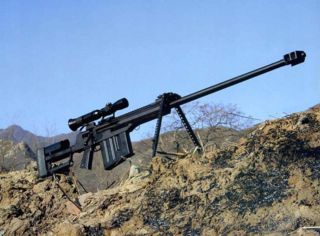 W
WThe AMR-2 is a 12.7mm sniper rifle which was developed in China as an anti-materiel sniper weapon, it was introduced in the early 2000s. Designed and developed by China South Industries Group, the rifle uses bolt-action and a conventional design. The AMR-2 fires a 12.7×108mm cartridge from a 5-round box detachable box magazine fitted directly ahead of the trigger group. The barrel is free-floating and has a large double baffle muzzle brake to mitigate recoil.
 W
WThe Anzio 20mm rifle is an American anti-materiel rifle designed and marketed by Anzio Iron Works. It is the first American anti-materiel rifle designed and mass-produced for public sale with a bore diameter in excess of .50 caliber in over 80 years. The rifles are available in three calibers, with the rifle's predominant chambering being the 20mm Vulcan caliber.
 W
WThe APR is family of Swiss bolt-action sniper rifles designed in 2003 as a further evolution of the French PGM Précision rifles by the Thun-based Brügger & Thomet company.
 W
WA cadet rifle is a rifle used by military cadets and others for basic firearms and marksmanship training. Generally .22 caliber and bolt-action, they also come in semi-automatic versions. They are often miniature .22 caliber versions of standard issue service rifles.
 W
WThe CZ 455 is a series of magazine-fed bolt-action rimfire repeating rifle manufactured by the Czech firearms manufacturer Česká Zbrojovka Uherský Brod and imported into the United States by CZ-USA. It is a successor of the highly popular CZ 452 rifles, and is chambered for the .22 LR, .22 WMR and .17 HMR calibers.
 W
WThe NTW-20 is a South African anti-materiel rifle, developed by Denel Mechem in the 1990s. It is intended for deployment against targets including parked aircraft, telecommunication masts, power lines, missile sites, radar installations, refineries, satellite dishes, gun emplacements, bunkers and personnel, using a range of specialised projectiles. As with other weapons of this type, it can also be used for counter sniping and ordnance disposal.
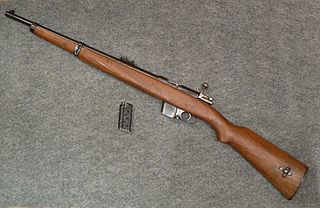 W
WThe Destroyer Carbine is a small bolt action carbine usually chambered for the 9 x 23 mm Largo cartridge. It was used by Spanish police and prison services, including the Guardia Civil from the mid-1930s until the late 1960s, replacing the El Tigre Rifle. It continued the tradition, started in the 1890s, of issuing police units with a short, handy, repeating carbine in pistol ammunition calibre.
 W
WThe DSR-1 is a compact bolt-action sniper rifle designed, manufactured and marketed by the German company DSR-Precision GmbH and was marketed also by the German company AMP Technical Services as a specialized sniper rifle for police sharpshooters. It has been adopted by the German GSG 9 counter-terrorist unit, as well as by other European special police units and agencies.
 W
WThe FR 7 and FR 8 are bolt-action rifles adopted by Spain in the 1950s. The "FR" stands for Fusil Reformado in Spanish . The FR 7 is a variant of the "Spanish M93 Mauser" bolt action while the FR 8 is based on the "Mauser System 98" bolt action. Due to their light weight, short barrel and the calibre used, their recoil and muzzle blast are relatively heavy.
 W
WThe Gepárd anti-materiel rifles are a family of Hungarian weapons designed to destroy unarmored and lightly armored targets. These long range, large caliber rifles have high accuracy as well as high muzzle velocity. In 1987 the Hungarian army sought to obtain a compact, mobile weapon that could damage lightly armored targets. The project, led by Ferenc Földi, culminated in the creation of the Gepárds.
 W
WThe Geweer M. 95, also known to collectors as the Dutch Mannlicher, was the service rifle of the Armed forces of the Netherlands between 1895 and 1940 which replaced the obsolete Beaumont-Vitali M1871/88. At first it was produced by Steyr for the Dutch, but after 1904, production took place under license at Hembrug Zaandam in the Netherlands. Although often regarded as being based on the earlier Mannlicher 1893 Model, the rifle is in fact a modification of the Mannlicher rifle by August Schriever and the Dutch rifle commission. The Dutch issued about 470,000 M.95s.
 W
WThe Gewehr 98 is a German bolt action rifle made by Mauser firing cartridges from a 5-round internal clip-loaded magazine. It was the German service rifle from 1898 to 1935, when it was replaced by the Karabiner 98k, a shorter weapon using the same basic design. The Gewehr 98 action, using a stripper clip loaded with the 7.92×57mm Mauser cartridge, successfully combined and improved several bolt action engineering concepts which were soon adopted by many other countries including the UK, Japan, and the US. The Gewehr 98 replaced the earlier Gewehr 1888 as the main German service rifle. It first saw combat in the Chinese Boxer Rebellion and was the main German infantry service rifle of World War I. The Gewehr 98 saw further military use by the Ottoman Empire and Nationalist Spain.
 W
WThe Gewehr 88 was a late 19th-century German bolt action rifle, adopted in 1888.
 W
WThe Type 88, sometimes known as "Hanyang 88" and Hanyang Zao, is a Chinese-made bolt-action rifle, based on the German Gewehr 88. It was adopted by the Qing Dynasty towards the end of the 19th century and was a standard Chinese rifle, being used by multiple factions and formations, until the end of the Chinese Civil War.
 W
WThe Karabiner 98 kurz, often abbreviated Karabiner 98k, Kar98k or K98k and also incorrectly sometimes referred to as a K98, is a bolt-action rifle chambered for the 7.92×57mm Mauser cartridge. It was adopted on 21 June 1935 as the standard service rifle by the German Wehrmacht. It was one of the final developments in the long line of Mauser military rifles.
 W
WThe KNT-308 is indigenous .308 caliber (7.62mm) sniper rifle designed by Kalekalıp of Turkey. KNT-308 stands for Keskin Nişancı Tüfeği 308 - Sharpshooter Rifle 308. Effective range of is 800 meters. It has been claimed to be 20% more effective than other bolt action rifles of its class, and 30% lighter with its 5.35 kilograms weight. It is also marketed as 30% cheaper than its counterparts. It costs $2,000 but with additional accessories it can cost $15,000-20,000. The KNT-308 will reportedly be used in the ongoing conflict between Turkey and the PKK in Eastern Turkey and Northern Iraq. It was displayed at the International Defence Industry Fair in 2009.
 W
WA Kropatschek is any variant of a rifle designed by Alfred von Kropatschek. Kropatschek's rifles used a tubular magazine of his design, of the same type used in the Japanese Murata Type 22 and the German Mauser Gewehr 1871/84. While designed for black powder, the Kropatschek action proved to be strong enough to handle smokeless powder.
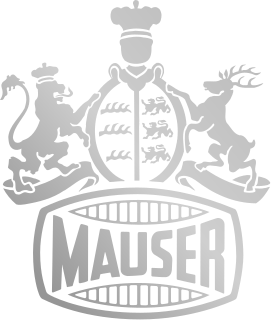 W
WMauser, originally Königliche Waffen Schmieden, is a German arms manufacturer. Their line of bolt-action rifles and semi-automatic pistols has been produced since the 1870s for the German armed forces. In the late 19th and early 20th centuries, Mauser designs were also exported and licensed to many countries which adopted them as military and civilian sporting firearms. The Mauser Model 98 in particular was widely adopted and copied, and is the foundation of many of today's sporting bolt action rifles.
 W
WThe Mauser Model 1871 adopted as the Gewehr 71 or Infanterie-Gewehr 71, or "Infantry Rifle 71" was the first rifle model in a distinguished line designed and manufactured by Paul Mauser and Wilhelm Mauser of the Mauser company and later mass-produced at Spandau arsenal.
 W
WThe Mauser Model 1889 is a bolt-action rifle of Belgian origin. It became known as the 1889 Belgian Mauser, 1891 Argentine Mauser, and 1890 Turkish Mauser.
 W
WThe Mauser Model 1895 is a bolt operated magazine fed rifle using the 7×57mm Mauser cartridge. It was exported to many overseas powers, including the Chilean forces which adopted as the Fusil Mauser Chileno Mo 1895. It is the first major modification of the Mauser Model 1893 and was produced by Deutsche Waffen und Munitionsfabriken, known as DWM, and Ludwig Loewe Company from 1895 to 1900.
 W
WThe MK 13 rifle is made using the Accuracy International Chassis System (AICS) version 2.0 mated to a long action Remington 700 receiver. The AICS 2.0 folding stock reduces the rifle's overall length by 210 mm (8.3 in) when folded and adds 0.2 kg (0.44 lb) to the rifle's total weight. The rifle has a cheek-piece design that adjusts sideways and for height for optimal cheek position when using night vision equipment or telescopic sights with large objective lenses. There is also a quick-adjust cheek-piece option that has a spring-loaded cheek-piece in conjunction with a quick-adjust butt plate. The side panels are made from a high-strength polymer and are available in the colors olive drab, dark earth or black. Sling attachment points are mounted on each side of the rifle, so it can be carried flat against the back and used comfortably by left- and right-handed users. A front attachment point is situated below the fore-end and can be used to anchor a target-style sling or replaced by an adapter for a Harris bipod.
 W
WMKE JNG-90 is a bolt-action sniper rifle that fires the 7.62×51mm NATO round used by the Turkish military. Development of the weapon first started back in 2004 to 2008. Its nickname is Bora and it is currently being offered for export.
 W
WThe 3-line rifle M1891, colloquially known in the West as Mosin–Nagant and in Russia and former Soviet Union as Mosin's rifle, is a five-shot, bolt-action, internal magazine–fed military rifle. It is primarily found chambered for its original 7.62×54mmR cartridge.
 W
WThe PDShP is a series of bullpup anti-materiel rifles developed by the Georgian Military Scientific-Technical Center STC Delta. The weapons are based on a bullpup design and there are different versions, Amr mod-1 and Amr mod-2. Development of the current series was completed in 2013.
 W
WThe S&T Motiv K14 is a .308 Winchester bolt-action sniper rifle developed by S&T Motiv, and is a standard sniper rifle of the Republic of Korea Armed Forces.
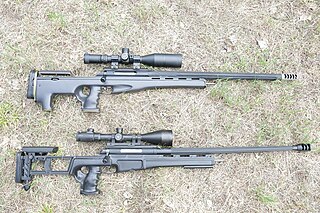 W
WThe Satevari MSWP is a proposed multi-caliber modular sniper rifle platform developed by STC Delta intended primarily for military but also limited civilian use. It was designed as convertible precision sniper rifle able to maintain high accuracy over long ranges and maximum effective ranges accordingly to cartridge and corresponding conversion.
 W
WFacing the threat of Western colonial expansionism in Southeast Asia during the later part of the 19th century, King Rama V of Siam, sought new weapons as part of a modernization program to ensure the kingdom's independence. After experiments with other rifles, the Siamese military decided to purchase a Mauser rifle based on the Gewehr 98 design as their principle service rifle. Through various modifications, adaptations, and using various cartridges, the Siamese Mausers served as the main infantry weapon of Siam until after World War II.
 W
WThe SIG Sauer CROSS is a light-weight bolt-action rifle manufactured by SIG Sauer's North American branch headquartered in Newington, New Hampshire in the United States, as a "precision hunting" rifle designed to "meet the demands of both precision long-range shooting and extreme backcountry hunting", available in three different calibers. Announced in December 2019, it is the company's first bolt-action offering since the SSG 3000 was introduced in 1992.
 W
WThe SIG Sauer SSG 3000 is a bolt-action, magazine fed rifle chambered in 7.62×51mm NATO. It was developed in Germany. It is a common law enforcement sniper rifle in both Europe and the United States. The SSG 3000 was developed by SIG Sauer GmbH and is well renowned for its high quality.
 W
WThe Steyr SSG 04 is a modern bolt action sniper rifle developed and produced by Steyr Mannlicher in Austria, as a complement to Steyr's SSG 69, using the same Safe Bolt System (SBS) action developed for Steyr's hunting rifles. It is also the basis for the Steyr SSG 08 and Steyr SSG Carbon.
 W
WThe Steyr SSG 08 is an Austrian bolt-action sniper rifle developed and produced by Steyr Mannlicher. The rifle is a further evolution of Steyr’s earlier SSG 04 sniper rifle.
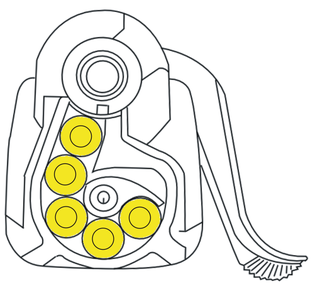 W
WThe SSG 69 is a bolt-action sniper rifle produced by Steyr Mannlicher that serves as the standard sniper rifle for the Austrian Army.
 W
WThe T93 Sniper Rifle is a 7.62×51mm bolt-action rifle designed and manufactured in Taiwan.
 W
WThe Taher is a sniper rifle developed by Iran chambered in 7.62x51mm NATO. It was revealed during the country's Muhammad Rasulullah-4 military exercises held 11-13 December, 2016. Iran announced that the weapon has a maximum range of 1,200 meters.
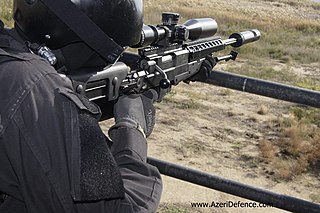 W
WYalguzag sniper rifle is a bolt-action sniper rifle that fires the 7.62×51mm NATO round used by the Azerbaijani Land Forces. Development of the weapon started in 2011 to 2012. Yalguzag means Lone Wolf in Azerbaijani
 W
WThe Zastava M07 is a modern military sniper rifle developed and manufactured by Zastava Arms, Serbia. The M07 rifle is based on the Mauser 98 bolt action, and the barrel is made of chrome-vanadium steel. The rifle is loaded from a detachable magazine with a capacity of 5 rounds.
 W
WThe Zastava M12 Black Spear is a 12.7mm or .50 caliber anti-materiel rifle developed by Zastava Arms of Serbia
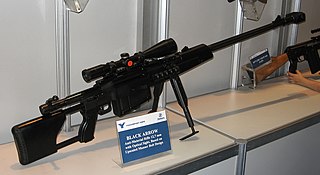 W
WThe M93 Black Arrow is a 12.7×108mm anti-materiel rifle developed and manufactured by Zastava Arms.
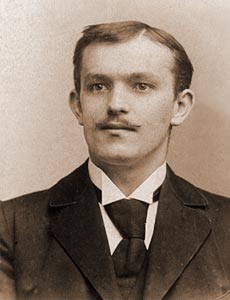 W
WZiegenhahn & Sohn Jagdwaffen e.K. is a German arms manufacturing company. It was founded in 1911 and is located in Benshausen.